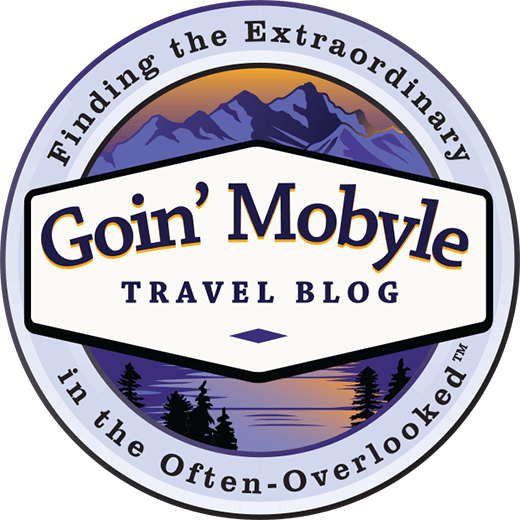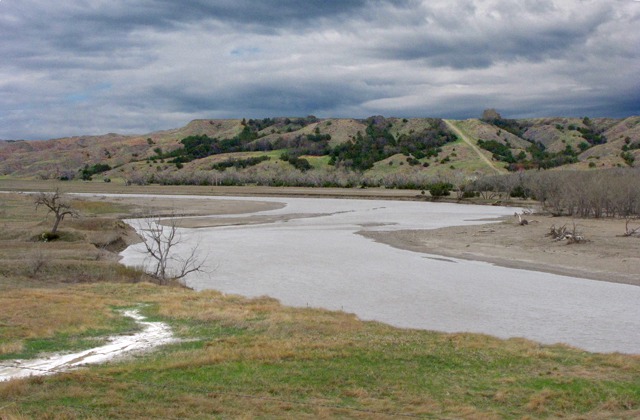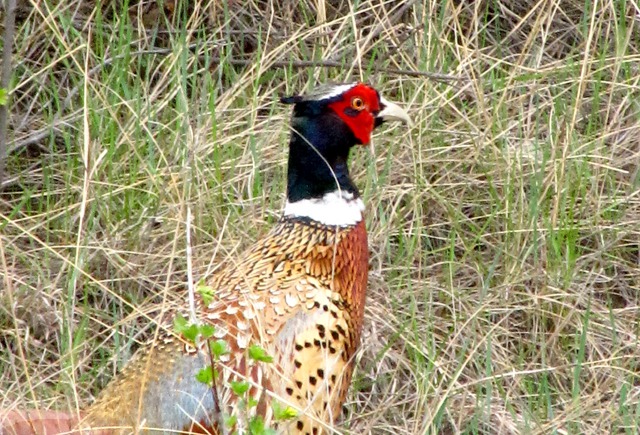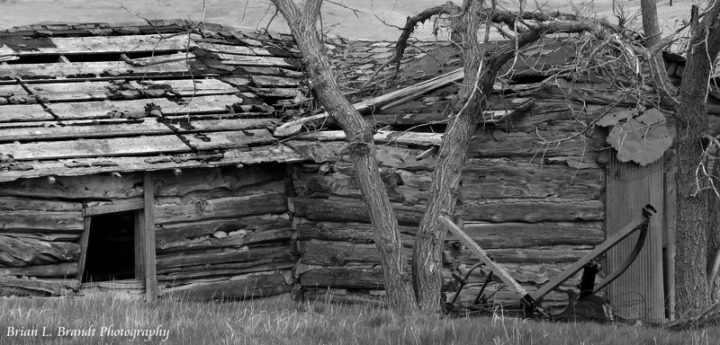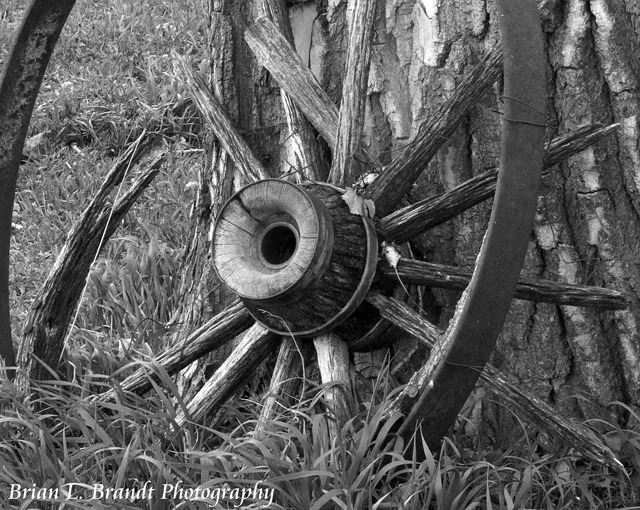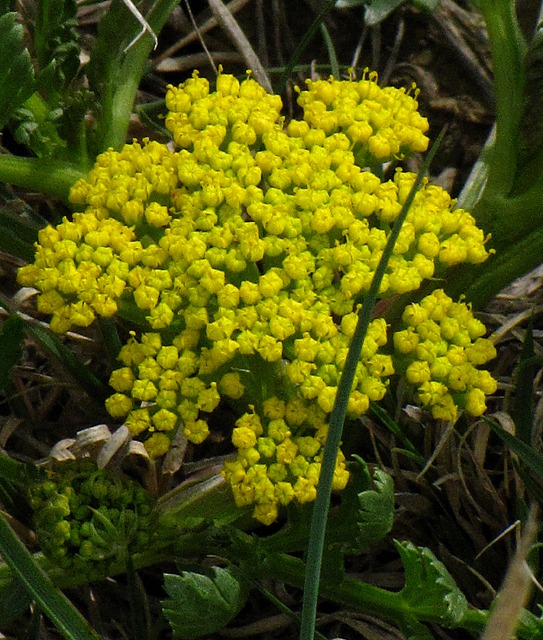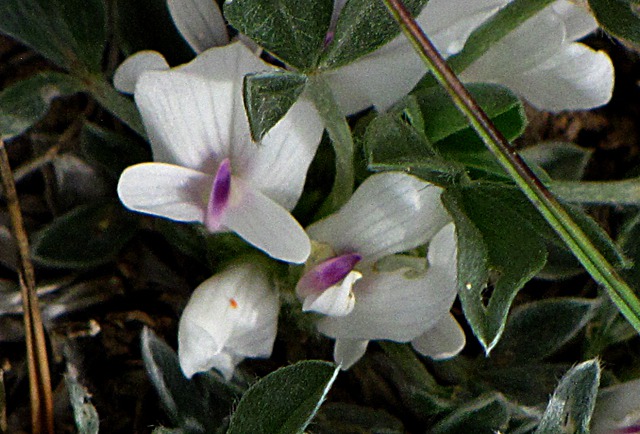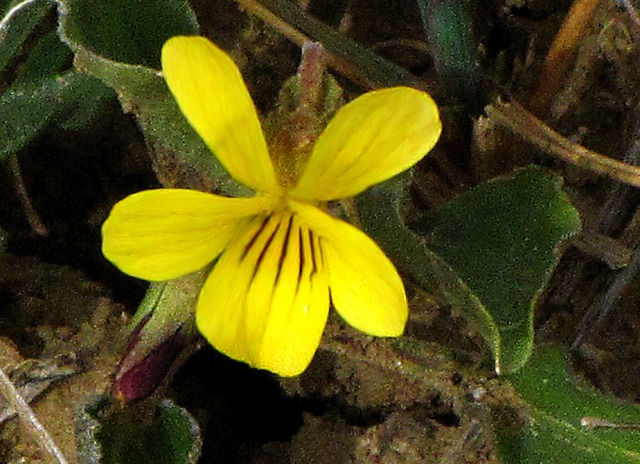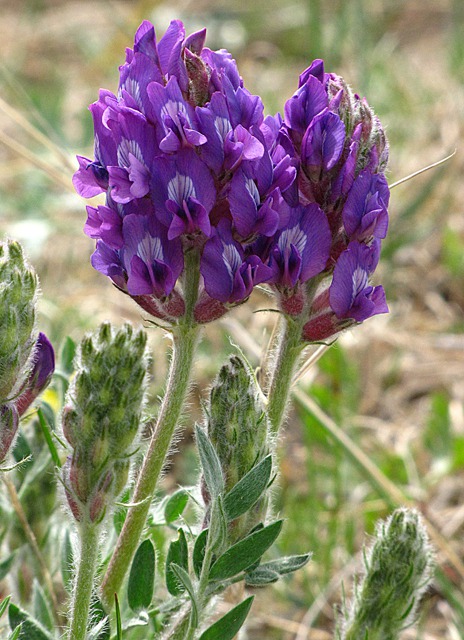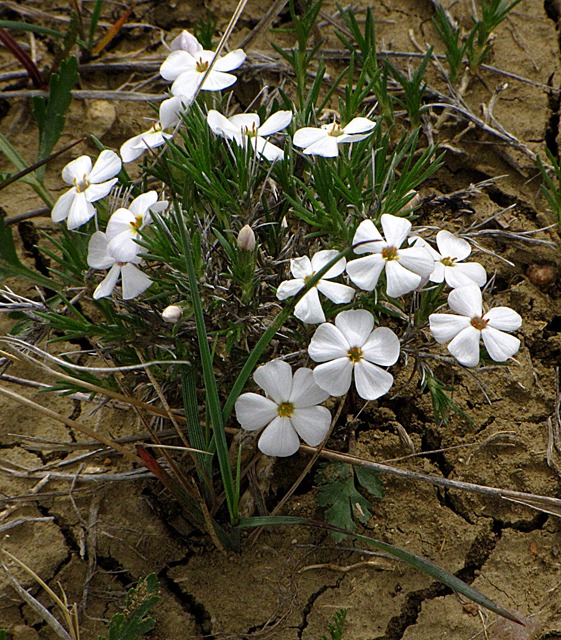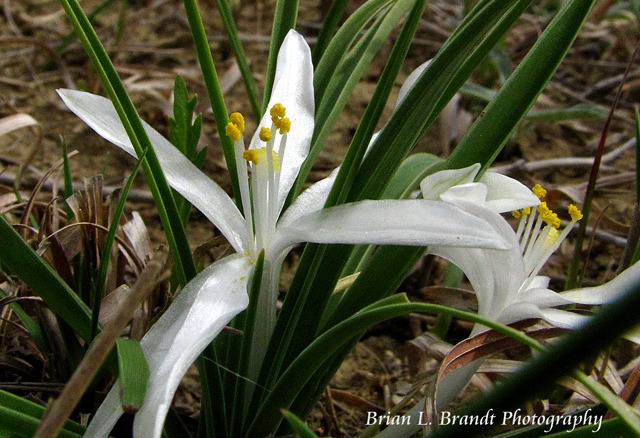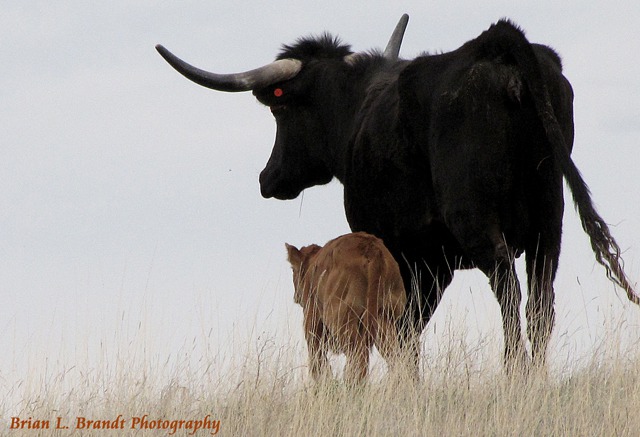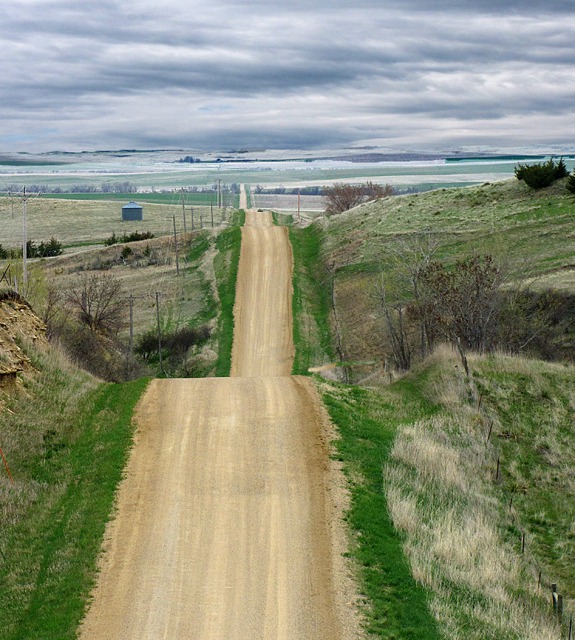Exploring: As we hit the top of the first long hill on Pedro Road out of the Cheyenne River bottoms, we encountered a small piece of relatively undisturbed ground -- long ravines home to juniper and other shrubs. These brushy draws provide the best wildlife habitat on these open plains. We had found one of the stretches of BLM (Bureau of Land Management) land out in these parts.Spring Flowers and Critters: Skulking off the side of the road was a "ring neck" -- otherwise known as a pheasant. He was trying to stay out of our sight while, at the same time, trying to attract hens with that beautiful red eye patch. While the land all around us had been reduced to hundreds of thousands of acres of essentially a beat-down, grazed-out mono-culture of non-native smooth brome grass, the ravines still held a small vestige of the native grasses like little bluestem and buffalo grass and plants that once covered the entire short grass prairie. One of the first dramatic ones we encountered was a large area of golden pea. As we left the first ravine area, we again topped out on some ranch land that was a virtual desert in terms of wildlife and native plants. A few birds plied their trade along the road, but virtually nothing but a few cattle were visible from horizon to horizon. There was mute testimony to how tough it is to scratch a living out of this country.Farther along the road, we encountered another small oasis of BLM land where the native plants were still thriving -- and on the ridges, they were growing close to the ground to keep their little heads out of the scouring wind.As we pulled away from the BLM land, we spotted the first game we'd seen (other than the pheasant) in 60 miles -- some wary antelope.A little farther along, just before we dropped off the plateau and down onto the flats to the Bad Lands, we saw a herd of longhorn cows with new calves. The mothers were spooky, as might be expected, and didn't hang around for much in the way of a "photo op." The longhorns are tough and well-suited to this country, but they are still amateurs at survival compared to the bison that used to inhabit the area.
We wandered to Big Foot Road, gravel that led us straight (literally) into Badlands National Park and Big Foot Pass. That journey is in the next post of this trip.
Text and Photos by Brian Brandt. All text and photos copyright 2011 -- Goin Mobyle LLC.
